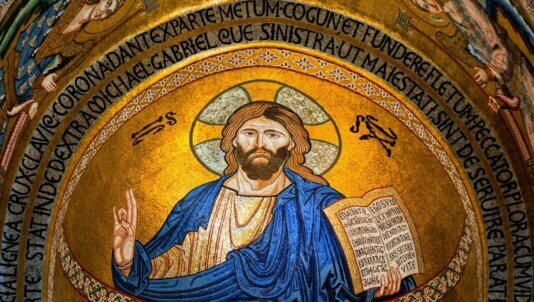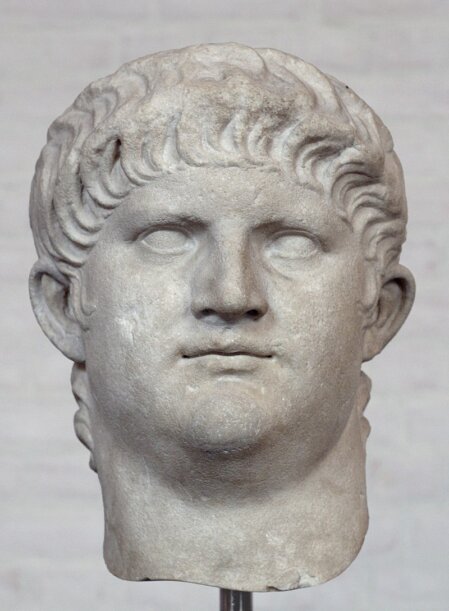The question of whether Jesus of Nazareth, referred to as Christ, existed as a historical figure has been a subject of extensive scholarly debate. According to 1 Timothy 2:5, Jesus is described as "the man Christ Jesus," reinforcing the notion of His humanity. To explore this question, researchers typically examine three primary categories of sources: classical texts from Greco-Roman historians, Jewish writings, and early Christian documents. Each category provides unique insights and contributes to the broader understanding of Jesus' existence, his teachings, and the impact he had on history and culture. By analysing these sources, we can better comprehend the historical context in which Jesus lived and the significance of His life and message.
What people really want to know is: Is there extra-Biblical evidence for Jesus’ existence?

Tacitus, formally known as Caius/Gaius (or Publius) Cornelius Tacitus, was a Roman senator, orator, and ethnographer who lived from approximately 55/56 to around 118 AD. Renowned as one of the preeminent historians of ancient Rome, Tacitus provides invaluable insights into the political and social dynamics of his time. His name derives from the Latin word "tacitus," meaning "silent," which reflects his precise and often understated writing style. In the context of historical evidence for the existence of Jesus, Tacitus is significant for his references to early Christianity and its founder, offering a perspective that corroborates the accounts found in Christian texts, thereby contributing to the ongoing discourse surrounding the historical Jesus.
His last major work Annals written about 116-117 AD includes a biography of Nero. During a fire in 64 AD in Rome, Nero was suspected of ordering the burning of part of the city. Just where he wanted he wanted build on. To move the blame onto someone else he blamed the Christians! Tacitus wrote this;
"either human effort nor the emperor’s generosity nor the placating of the gods ended the scandalous belief that the fire had been ordered [by Nero]. Therefore, to put down the rumor, Nero substituted as culprits and punished in the most unusual ways those hated for their shameful acts … whom the crowd called “Christians.” The founder of this name, Christ
(Christus in Latin), had been executed in the reign of Tiberius by the procurator Pontius Pilate … Suppressed for a time, the deadly superstition erupted again not only in Judea, the origin of this evil, but also in the city [Rome], where all things horrible and shameful from everywhere come together and become popular."
Tacitus’s terse statement about “Christus” clearly corroborates the New Testament on certain historical details of Jesus’ death. Tacitus presents four pieces of accurate knowledge about Jesus: Christus, used by Tacitus to refer to Jesus, was one distinctive way by which some referred to him, even though Tacitus mistakenly took it for a personal name rather than an epithet or title; this Christus was associated with the beginning of the movement of Christians, whose name originated from his; he was executed by the Roman governor of Judea; and the time of his death was during Pontius Pilate’s governorship of Judea, during the reign of Tiberius. (Many New Testament scholars date Jesus’ death to c. 30 AD.; Pilate governed Judea in 26–36 AD., while Tiberius was emperor 14–37AD
Tacitus, renowned as one of Rome's most esteemed historians, stands out for his meticulous approach to historical writing and his commitment to accuracy. During his tenure as Proconsul of Asia, he was deeply involved in judicial proceedings, which provided him with a unique perspective on the socio-political landscape of his time. His works reflect a profound understanding of the complexities of Roman life and governance, making his accounts invaluable for historians. Tacitus's references to early Christians and their founder contribute significant external validation to the historical existence of Jesus, underscoring the importance of his writings in the broader discourse surrounding this pivotal figure in history.

The title page of Justus Lipsius's 1598 edition of the complete works of Tacitus

Head of Nero (reign 54–68 AD), from an oversized statue, about 2.40 m height. After 64 AD
Flavius Josephus
The existence of Jesus as a historical figure is further substantiated by the writings of Flavius Josephus, a Jewish historian and priest who lived during the first century. Josephus, raised in an aristocratic family in Palestine and later residing in Rome under the patronage of successive emperors, provides valuable insights into the cultural and political landscape of his time. In his historical accounts, he references Jesus, describing him as a wise man and a doer of marvelous works, which underscores the impact Jesus had on his contemporaries. This external evidence from a respected source not only reinforces the historical narrative surrounding Jesus but also highlights the significance of his life and teachings in shaping the course of history.
In the early days of the first Jewish Revolt against Rome (66–70 AD.), Josephus was a commander in Galilee but soon surrendered and became a prisoner of war. He then prophesied that his conqueror, the Roman commander Vespasian, would become emperor, and when this actually happened, Vespasian freed him.
Josephus lived in Rome under the protection of the Flavians and there wrote his historical and apologetic writings” He changed his name to Flavius, after the family name of his patron, the emperor Vespasian, and set it before his birth name, becoming, in true Roman style, Flavius Josephus.
Most Jews viewed him as a despicable traitor. It was by command of Vespasian’s son Titus that a Roman army in 70 AD destroyed Jerusalem and burned the Temple, stealing its contents as spoils of war, which are partly portrayed in the imagery of their triumph on the Arch of Titus in Rome. After Titus succeeded his father as emperor, Josephus accepted the son’s imperial patronage, as he did of Titus’s successor, Domitian.


CHRESTIANS OF CHRIST. Book XV of Tacitus’s
Annals
is preserved in the 11th–12th-century
Codex Mediceus
II, a collection of medieval manuscripts now housed in the Biblioteca Medicea Laurenziana in Florence, Italy, along with other manuscripts and books that belonged to the Medici family. Highlighted above is the Latin text reading “… whom the crowd called ‘Chrestians.’ The founder of this name, Christ, had been executed in the reign of Tiberius by the procurator Pontius Pilate …”
Photo:
Codex Mediceus
68 II, fol. 38r, the Biblioteca Medicea Laurenziana, Florence, Italy.
